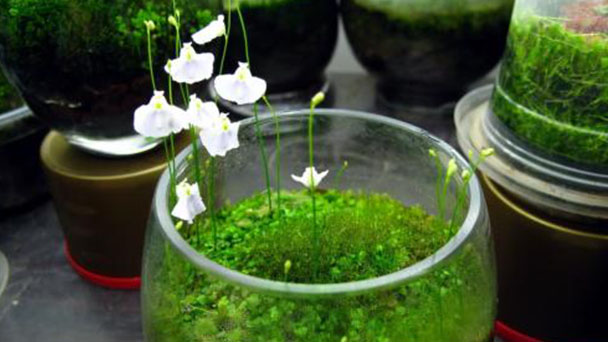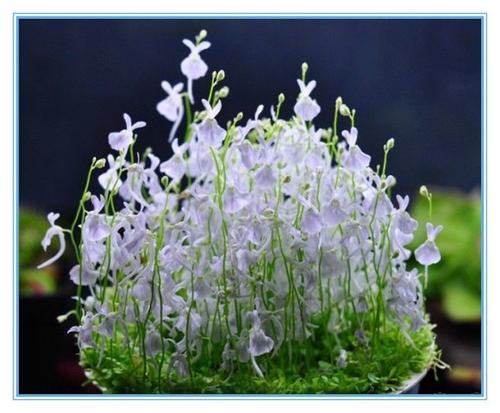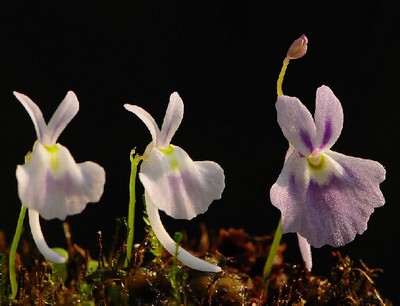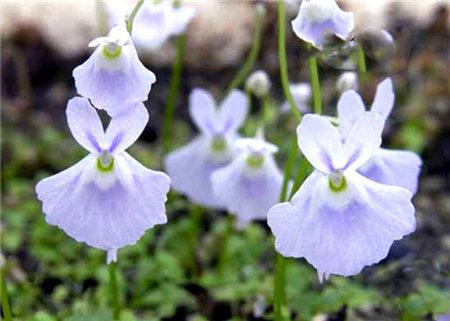Utricularia profile
Written by Maggie
Dec 19 2020

Utricularia is found in temperate regions of the Northern Hemisphere and is found in lakes, ponds, swamps and paddy fields at elevations of 50-3500 m.
Utricularia can be used for ornamental purposes. It is used as a flower and leaf watching plant in water, and can be used as medicine. The whole grass cure viscera haemorrhage and chronic bronchitis.

Morphological characteristics of Utricularia
Utricularia is an aquatic herb.Stolons cylindrical, 15 -- 80 cm long, 0.5 -- 2 mm thick, much branched, glabrous, internodes 3 -- 12 mm long. Lobes are numerous, alternate, 2-lobed to base, lobes ovate, elliptic or oblong-lanceolate in outline, 1.5-6 cm long, 1-2 cm wide, first pinnate, then 2-4 times bicuspid; Final lobes are hairy, apically acute or slightly obtuse, margin with several small teeth, apically and apically with one to several small bristles, others glabrous. Winter buds form in autumn on the tips of prostrate branches and their branches, winter buds bulbous or ovoid, 1-5 cm long, densely covered with small bristles. Insect traps are usually numerous, laterally on lobes of leaf vessels, oblique ovoid, laterally flat, 1 -- 3 mm long, with short stalks; Ventral, upper lip with 2 bristle-like appendages with many branches, lower lip without appendages. Utricularia inflorescence is erect, 10-30 cm long, with 3-10 scattered flowers above middle, glabrous; The peduncle is terete, 1-2.4 mm thick, with 1-4 scales; Bracts are isomorphic with scales, basally, broadly ovate, orbicular or oblong, apically acute, orbicular or 2 to 3 lobed, base auriculate, membranous, 3-7 mm long; Utricularia has no bracteoles; Pedicels are filiform, 6-15 mm long, erect in flowering stage, conspicuously recurved in fruit stage. The calyx is 2-lobed to base, lobes subequal, ovate to ovate-oblong, 2.5 -- 33 mm long, upper lip slightly obtuse, lower lip apex truncate or slightly concave. Utricularia corolla is yellow, 12-18 mm, glabrous; The upper lip is ovate to suborbicular, 6-9 mm long, lower lip transverse elliptic, 6-12 mm long, 9-16 mm wide, apical rounded or slightly concave, laryngeal convex uplift shallowly cystic;Cuboidal, broadly conical at base, apical more or less acute, shorter than lower lip and set apart at an acute Angle, only distal to the inner surface of scattered glandular hairs. Stamens are glabrous; Filaments are linear, curved, 1.5-2 mm long, capsule confluent. Utricularia ovary is globose, glabrous; The style is slightly shorter than ovary, glabrous;Stigma lower lip semicircular, margin fringed, upper lip small, equilateral triangle. The Utricularia capsule is globose, 3-5 mm long, circumscissile. Seeds are flattened, with 6 angular and finely reticulated projections, 0.5-0.7 mm in diam., 0.3-0.4 mm thick, brown, glabrous.
Utricularia growth environment
Utricularia is found in lakes, ponds, swamps and paddy fields at elevations of 50-3500 m.
Utricularia distribution range
Utricularia is found in temperate parts of the northern Hemisphere. In China, it is distributed in Heilongjiang, Jilin, Liaoning, Inner Mongolia, Ningxia, Hebei, Shanxi, Shaanxi, Gansu, Qinghai, Xinjiang, Shandong, Henan, Sichuan (northwest) and Tibet.

Utricularia growth habit
Utricularia is a "carnivorous" plant that "hunts" with insect traps. The insect sac consists of petiole, cyst wall, tentacle, setae gate, entrance and glandular hair. All the traps are on elongated petioles, and the position of the opening of the traps relative to the petioles is a distinguishing feature. The wall of the capsule is generally composed of two layers of cells, the inner layer of which is smaller than the outer layer. The sac is normally at negative pressure, and the antennae at the front of the sac attract the insect towards the door. As soon as an insect touches the bristle of the doorway, the door opens to release the negative pressure, sucking the insect, along with the water, into the trap. There are different types of glands in the capsule, and the four-branched cilia secrete digestive enzymes to digest the prey and absorb nutrients from it. Near the opening, bifurcated glands help to establish negative pressure in the sac from which they absorb water and transport it out of the sac.
Utricularia blooms from June to August and produces fruit from July to September. Some people have been tested, bladderwort catching insects, before and after the last not even more than a minute. Scientists also found that bladderwort would not be able to flower and bear fruit if it was not allowed to eat the insects.
Utricularia main value
Utricularia can be used for ornamental purposes. It is used as a flower and leaf watching plant in water. Utricularia can be used as medicine, and the whole grass can cure viscera haemorrhage and chronic bronchitis.

Latest Updated
- Benefits of Bugleweed - 7 Science-backed Health Benefits
- Bugleweed Dangers & Side Effects - Is It Poisonous?
- How to Plant Evergreen Trees - What You Should Know
- When to Plant Evergreens - Grow Guide for Evergreen Trees
- 12 Wonderful Evergreen Shrubs for Your Garden
- 12 Popular Evergreen Plants with Pictures for Beginners
- When And How To Prune A Lilac Bush Like a Pro
- How to Grow & Care for Lilac Vine (Hardenbergia Violacea)
- Japanese Lilac Tree (Syringa Reticulata) Care & Propagation Guide
- Shumard Oak Pros and Cons - What to Know
Popular Articles
- Winter maintenance of Antirrhinum Majus
- How to Grow Terminalia Mantaly Tree
- How to Grow and Care for Crossostephium Chinense
- How to grow Antirrhinum Majus in spring
- Peristeria Elata (Dove Orchid) Profile: Info & Care Guide
- Underwatered Snake Plant (Sansevieria Trifasciata) - Signs And How To Fix
- How to Care for Brazilian Jasmine Plant (Mandevilla Sanderi)
- How to Grow & Care for Graptopetalum Purple Delight in Summer
- Rosa Chinensis (China Rose): Plant Growing & Care Tips
- How to Care for Baby Sun Rose (Aptenia Cordifolia)